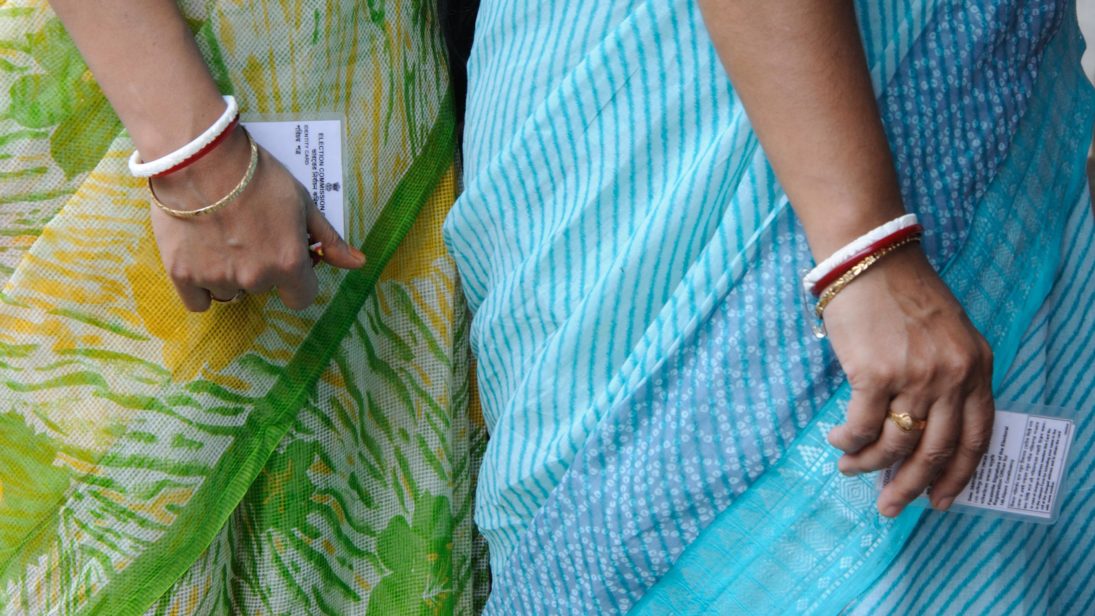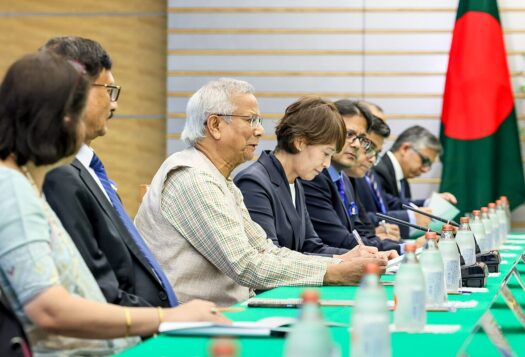
Two reports on freedom and democracy rankings across the world have recently created a furor in India. Freedom House – a U.S.-based non-profit measuring political rights and civil liberties since 1990 – reported a four-point decline in India’s score, changing its status from “Free” to “Partly Free.” The Sweden-based Varieties of Democracy Institute (V-Dem) similarly reported a drop in India’s democratic status from “Electoral Democracy” to “Electoral Autocracy.” Criticizing the methodology and accuracy of these reports, the Indian Minister of External Affairs declared that the reports represented the “hypocrisy” of the western world.
In comparison, with very shallow declines and no change in its overall categorization, the reports did not receive much attention in Pakistan, whose scores have continuously declined since the current government came to power in 2018. Without any change in its “Partially Free” status, Pakistan fell from 43 in 2018 to 37 in 2021 in the Freedom House Index.1 Similarly, according to V-Dem, Pakistan remains an electoral autocracy and four points below its 2013 score.
Popular media rarely conducts trend analysis or analysis of components of an index to look between the reported numbers. Yet, a comparative trend analysis is important to have a broader perspective on the democratic backsliding in South Asia, viewing it not just as a domestic issue but a shift associated with the rise of right-wing populism in the region. As the analysis reveals that gap in the democratic status of Pakistan and India is quickly eroding, it is natural that policymakers in India, having used democracy as a diplomatic advantage, are taking these reports more seriously. Yet, neither Pakistan’s indifference nor India’s response proposing the creation of an Indian-based democratic index would bring much shift in the international perception of democratic development in South Asia, reflected through these indices. Both countries need to address the common problems of illiberalism and electoral mismanagement through legislative and practical measures.
Both countries need to address the common problems of illiberalism and electoral mismanagement through legislative and practical measures.
Understanding the Trend
When comparing India and Pakistan’s Freedom House scores2 since 2014, it is clear that the current decline started for both countries in 2018: the year Pakistan elected its current Prime Minister Imran Khan and as Prime Minister of India Narendra Modi’s first term was about to end. The two right-wing populist leaders clearly have a role to play in their countries’ democratic decline: both promote religious nationalism, present opposition forces as anti-national, and suppress decentralization and devolution of power. Under these leaders, the crackdown on journalists and academics and cases of extra-judicial killings inspired by religious extremism have increased notably.
The data reported by Freedom House supports the belief of some scholars that Modi’s second term has turned out to be more autocratic than the first one. Unlike Freedom House, V-Dem3 has reported steeper decline in India’s score during Modi’s first term (13 points down from 0.54 in 2014 to 0.41 in 2018). This reflects a change in the India’s secularistic outlook with Modi’s victory in 2014 election. A strong critic of India’s secularism, Modi explicitly rejected the policy of “minority appeasement” in his political campaign and, hence, his victory in 2014 election marked the success of majoritarianism in India.
Pakistan’s V-Dem score also declined under the first years of the Khan administration. Despite a two-point increase in 2020, the overall trend for Pakistan is of decline in comparison to pre-2018 governments. Yet the decline is not much steeper because the issues of religious extremism, civil-military power imbalance, and compromised independence of important institutions like the judiciary and election commission have remained constant for Pakistan, irrespective of change in governments.
Hence, while 2020 marked a shift in the categorization of India in both indexes – making it a “partly free” “electoral autocracy” – the downward trend has been ongoing for several years. Scholars like Fareed Zakaria and Christopher Jaffrelot have been warning about illiberal democracy in India even before these indices started reporting a decline. Had Indian policymakers prioritized these warnings, it may have been possible to prevent India from falling from the category of free democracy. Even now, the response from government is to criticize the standards of the reports and present India as a unique case of democracy, overlooking how these standards are mirroring international perception of India. Conversely, the current Pakistani government has referred to the very idea of democracy as a “tragedy“, not just its “Western” concept, reflecting why the poor democratic status in these indices brought little stir in the policy circles of Pakistan.
Looking at Electoral and Liberal Indices Separately
While Freedom House specifically measures the degree of civil and political liberty in a country, V-Dem focuses on liberal democracy, seeing it as a merger of free and fair elections and respect for rule of law. Comparing 2014 data of Freedom House with the current year’s data, one can confirm the popular belief that in terms of political rights, India has shown stability and the decline in its score is mainly caused by restraints on civil liberties. However, in the case of Pakistan, Freedom House has not reported any particular decline in civil liberties and instead has reported a decrease in political rights only. This could be because Pakistan has a poor human rights record, with limited space left to reduce that record further.
In contrast to Freedom House, V-Dem data on India shows a serious decline in both electoral and liberal dimensions of democracy. Since the most prominent decline in India’s score is in the component of “clean elections” from 0.77 in 2014 to 0.58 in 2020, it appears that V-Dem is openly questioning the fairness of recent elections in India. This is in line with several post-election reports claiming that while 2019 elections in India were mostly free, they were not entirely fair, due to the questionable impartiality of Election Commission of India, unregulated electoral financing, and the rise in electoral violence and harassment of voter by polling agents.
As the Modi administration considers the projection of India’s soft power as an important part of the country’s diplomacy, it must pay heed to these numbers for they have the power to influence India’s efforts to emerge as a democratic global power.
In comparison, while Pakistan’s score of both electoral and liberal component of V-Dem Index declined, the decline in electoral component is more pronounced than that in liberal component. The decline in electoral component is no surprise as international election observers reported military interference in the election process during 2018 general elections. Yet, the most striking data reported by V-Dem about Pakistan is an abrupt rise in the score of freedom of expression and alternative sources of information in 2020 after a seven-year gradual fall. Despite the fact that the 2020 score is still lower than the score before 2018, the data is hard to explain, as Pakistan saw a notable decline in its freedom of press ranking by Reporters Without Borders in 2020. Also, while V-Dem reported a noteworthy decline in freedom of association and equality before law and individual liberty, the rise in judicial and legislature constraints on the executive balances it out, explaining why Pakistan regressed only four points in its liberal democracy score despite reports of shrinking space for individual liberty.
All in all, as universal adult suffrage and popular elections remain at the highest possible score for both India and Pakistan, V-Dem identifies gaps mainly in the fairness of election and protection of civil liberties for both countries. It raises important question on how, despite the different democratic trajectories taken by the two countries after their partition in 1947, Pakistan and India ended up facing similar issues.
Sum and Substance
While India has the option to question the accuracy and impartiality of the global indices, it cannot change the fact that these indices are a powerful tool of narrative building and can shape international perception. More importantly, building a national narrative through an Indian-based index might not work because data reported in these indices is in concordance with many other scholarly works on declining liberal democracy in India. As the Modi administration considers the projection of India’s soft power as an important part of the country’s diplomacy, it must pay heed to these numbers for they have the power to influence India’s efforts to emerge as a democratic global power.
A similar logic of the diplomatic and strategic value of these ranking applies to Pakistan, which must not look away from these reports just because there was not as significant a decline in 2020. Looking at gradual decline and already low scores, Pakistan could diagnose why it is losing voice in the global forums, despite important contributions to war on terror. In addition to the promised electoral reforms, Khan-led administration has a much bigger challenge of establishing the very “liberalism” it has been criticizing for years.
***
Image 1: Al Jazeera English via Flickr
- The Freedom House Index reports scores and ranking of current year based on last year’s data. So, a 2021 ranking reflects condition of freedom in a country in 2020.
- Freedom House measures civil liberties and political rights based on a standard built around the Universal Declaration of Human Rights. On a 4-point Likert scale, with zero being least free, each country is assessed on 10 indicators of political rights and 15 indicators of civil liberties. A detailed description of its methodology can be read here.
- In comparison to Freedom House, V-Dem measures democracy through a multidimensional approach. The scores reported here are of liberal democracy index composed of two components: electoral and liberal. The scoring is on a scale from 0 to 1.


